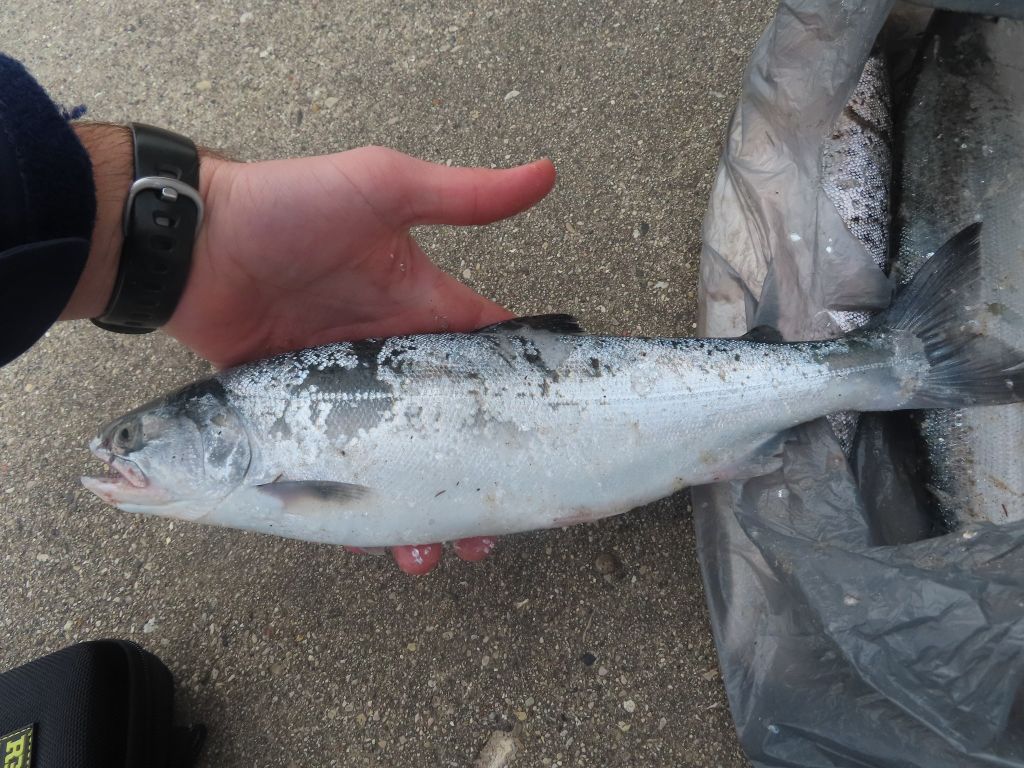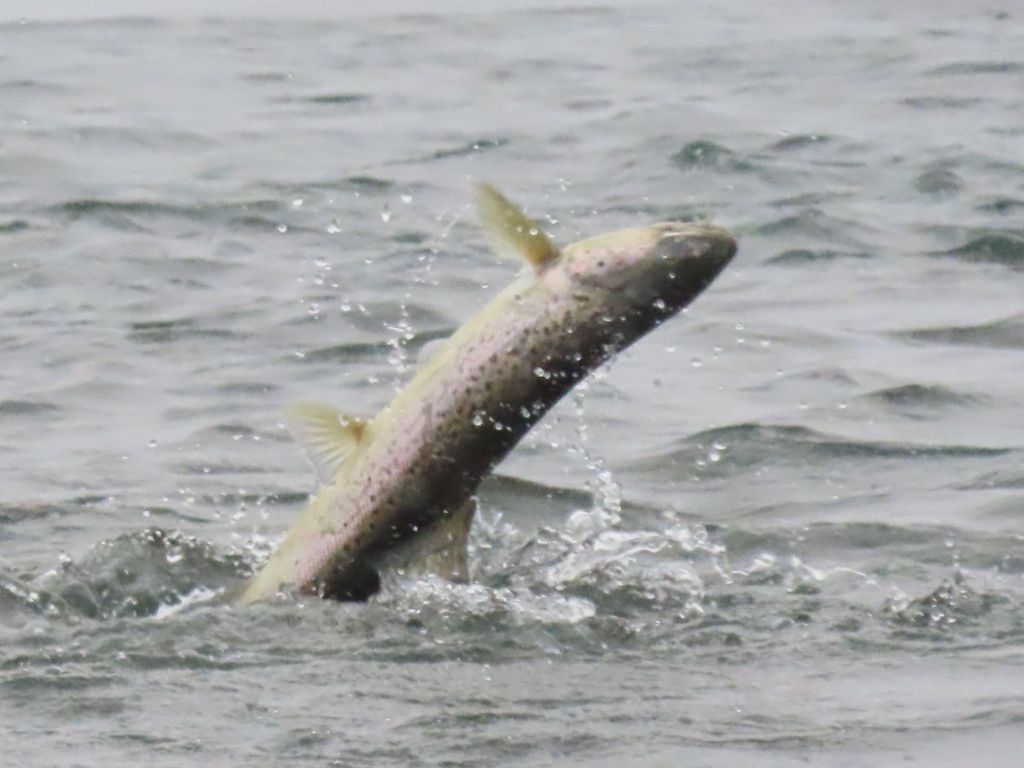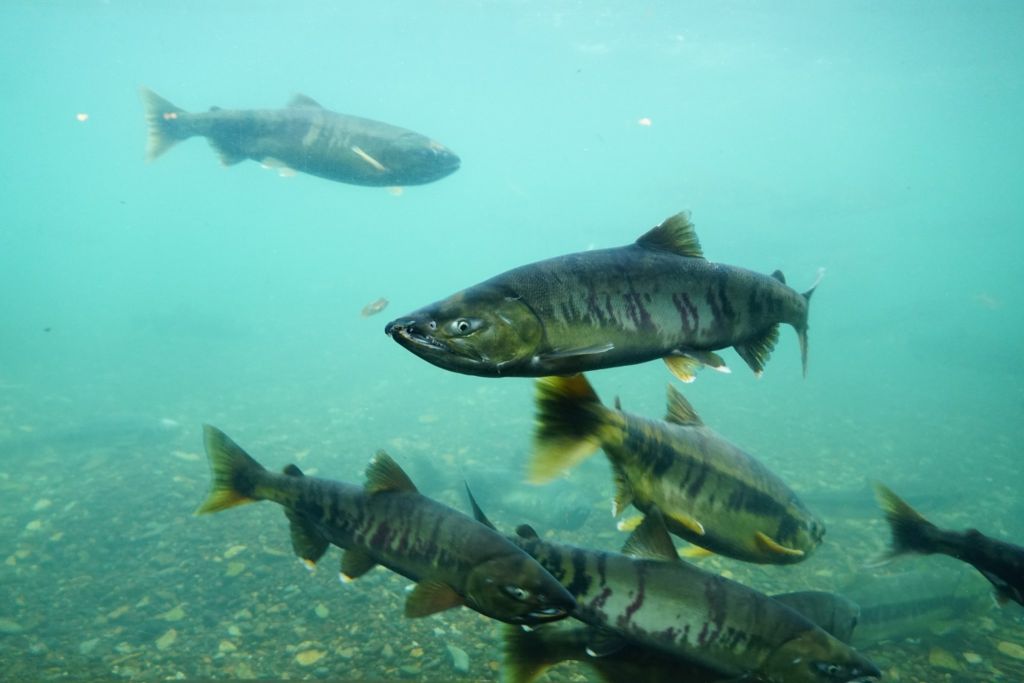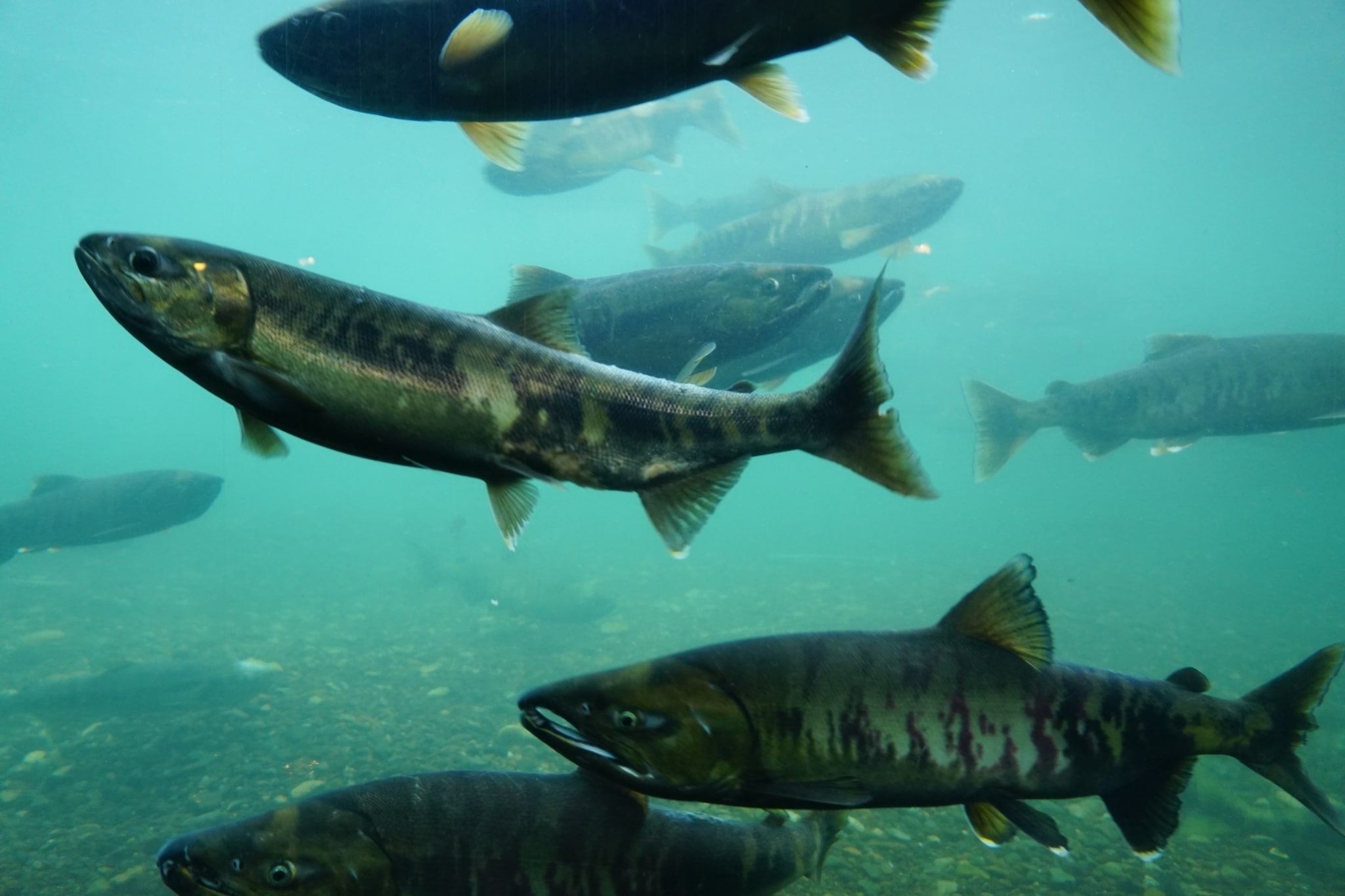As we’ve written in the past, salmon is the second-most popular seafood, behind shrimp, in the U.S. Its popularity is powered by three factors:
- Despite vigorous conservation efforts and regulations, salmon is readily available in the northern tier of the U.S. and Alaska.
- Several species are huge (100+ lbs.) and offer anglers explosive strikes and powerful, challenging fights.
- Lastly, fish is wonderful to eat.
Fishing for salmon is on most anglers’ bucket lists for the above reasons and more. Whether it’s fishing an icy, remote river in Alaska, on a lake surrounded by mountains in the Pacific Northeast, or trophy waters in the Northeast, salmon’s allure is legendary.
There are six salmon species available in the U.S., including chinook/king, pink, coho, chum, sockeye, and Atlantic. Steelheads—which are actually trout– are often listed as the seventh species.
While there are notable differences between the species— chinooks are known for their mammoth size while smaller sockeyes are known for hitting at the first light of day and their flavor—all salmon begin their lives in the ocean before returning to freshwater to spawn. While in the ocean, they feed on smaller fish, eels, squid, and shrimp before making an annual journey to freshwater rivers, lakes, and bays to spawn.
For anglers, the timing of these journeys is critical—and often tricky since it depends on where you’re fishing and the targeted species. While it’s safe to assume that summer is the best season for most species, late spring and early fall are also desirable, depending on the location. In Alaska, for example, the action begins to heat up in mid-May, while Lake Michigan’s legendary Coho runs start in June while Chinook runs start in late July/early August.
Your best bet is to plan ahead by contacting local guides, bait shops, and lodges to get your timing right and check up on local laws concerning catch-and-release, gear and bait that can be used, and other regulations.
Timing is certainly a consideration when salmon fishing, but using the right gear and techniques is also important. Fear not! Fishbox is here to help you get the most out of your salmon fishing expedition by not only steering you toward the best locations—based on our advanced algorithms and local knowledge—but also with the information provided here.
Get Hot Spots Where
Fish Are Active Now!
Select the type of water you usually fish in:
ESSENTIAL GEAR AND TECHNIQUES FOR CATCHING SALMON
Gear
Let’s start with the right gear.
In terms of rods, most anglers prefer moderate action, 9-foot rods so they can feel the quick strikes and manage the longer runs provided by most salmon species, especially when using live bait (such as salmon roe, where permitted). Those using spinners and metal jigs typically opt for medium or medium-light action rods (those in the 7-foot to 8-foot-6 range), especially when fishing crowded riverbanks, piers, and on charter boats.
There isn’t a clear consensus on reel size when it comes to salmon fishing. Most say that 2500-3000 size reels from major manufacturers such as Penn, Shimano, and Daiwa will handle most situations, along with 20-30 lb. test braided line with 5-foot 25-40 lb. leaders. (Stepping up to 40-60 lb. the test line may be useful when fishing in deep lakes and bays.)

If you’re targeting larger salmon in lakes or major rivers, suggested reel sizes go up to 4000, and rod lengths start at 8-foot-6.
For trolling (see below), a standard spinning setup equipped with 20-25 lb. line can be used along with a three-way swivel at the end of the mainline, a 12-36 inch dropper line and weight off the center of the three way swivel, and a 6-8 foot leader with hooks and a cut herring or lure.
For fly fishing, salmon guides typically provide clients with a 7-9 foot, 8-10 weight fly rod with a basic reel and a 5-foot leader. For flies, most suggest nymphs when a little depth is needed and dry flies for when fish can be seen near the surface.
Read also: The Complete Guide to Types of Fishing Reels
Generally, salmon fly better in shallow to moderate water (2-8 ft.) and in pools where the water seems to rise and gain speed. Look for salmon where waters become calmer after running into a pool from riffles or rapids.
After a rain, rising river levels are a mixed blessing for fly-fishing for salmon. They’ll be active before the water gets muddy but will typically ignore flies when the river is full. Once the water table returns to normal levels, they’ll head back to their favorite pools.
In some of the more popular locales, such as the Salmon River in New York, the banks are so crowded with anglers that even die-hard fly-fishers opt for rods and reels to shorten and control their casts and retrieves.
(NOTE: Keep in mind that in some areas of Alaska, during salmon reels, rods and reels aren’t even needed. The fish are so plentiful and close to shore that all you’ll need is a dipnet—and some waterproof boots.)
Technique
In terms of technique, trolling from a slow-moving boat is the most popular method for catching larger salmon.
This fishing method allows you the option of simply fishing one line or dropping several lines simultaneously and covering larger areas of water. Most anglers try different baits on their lines to better their chances of catching salmon. Whole bait fish, such as herring or minnows, can be effective, but if a little spinning action is preferred, cut bait combined with a plug provides salmon with the appearance of an injured fish, which is typically a powerful attractant.
Drifting is the most common technique while fishing from a riverbank or shoreline.
It’s as simple as it sounds (for the most part). After an angler casts a line upstream—preferably past a shallow pool, riffle, or where salmon have been sighted—the line gets retrieved slowly before the process starts again. The key is presentation.
Bounce your setup along the bottom at the same speed as the current. To slow down your bait, add more weight; to speed it up, use less weight.
For those fishing from a shoreline or pier, most anglers go with metal jigs at weights to maximize casting distance and accuracy. It’s best to start with a 1 oz.-1.5 oz. jig; this way, you’ll be able to gauge how deep you’re fishing without getting snagged on vegetation or rocks.
Read also: The Ultimate Guide to Jig Fishing: Tips, Techniques, and Best Practices for Beginners
If you’re using clusters of salmon roe, the best plan of attack is to cast your line, reel in the slack, and then let the bait sink before pulling up on your line. Then, let it sink again before pulling up again. Salmon will hit during both actions, so you must be prepared.
In the Columbia River in the Pacific Northwest, anglers utilize a technique called “plunking,” whereby angling presents a line in the salmons’ migratory path and patiently awaits a strike. Guides know where these “paths” are, but often they can be seen from the riverbank.
Check with local regulations regarding the use of treble hooks in certain locations. In some hotspots, treble hooks are prohibited, while in other areas the use is permitted after certain months (typically late in the season).

Once hooked, salmon instinctively go on an initial run. During this run, any slack line should be fed through the guides carefully to avoid knots. Keeping consistent pressure on the fish is key, but avoid holding it too tight. Head shaking and jumps are another common characteristic. Line pressure needs to be relaxed in both scenarios; some suggest dropping the tip of your rod toward the water and “bowing” to the fish to release pressure. Too much pressure typically results in a lost fish.
With larger fish, take your time in landing it in hopes of tiring it out and making it somewhat easier to land.
TIMING IS EVERYTHING WITH SALMON FISHING
Each species of salmon has its own peak season—when they move from saltwater to freshwater to spawn–but they can vary according to location and environmental conditions.
Here’s a rundown of salmon species and when their typical “runs” start to occur:
- Atlantic salmon: Generally late summer to early fall, although they can take place throughout the year.
- Chinook/”King” salmon: Beginning in deep lake waters in the spring and lasting through the summer in most locales; September through early November in Northeast U.S.
- Coho salmon: Late summer to early fall in most locales; May through June only in Alaska.
- Chum salmon: July-August, then November in Alaska.
- Sockeye salmon: Late summer through fall in most locales; peak availability in Alaska is July-August only.
- Pink salmon: Late spring to mid-summer in most locales; mid-July through mid-August in Alaska and Pacific Northwest.
- Steelhead (trout): Late September through early December in Lake Ontario tributaries; early spring in the Pacific Northwest.
CONSERVATION EFFORTS IN SALMON FISHING
Salmon fishing has come under pressure in recent years due to overfishing, loss of habitat, and environmental factors. While the number of native salmon has declined, conservation efforts such as the development of hatcheries, climate change, the removal of dams and other structures that change water temperature and flow, and other measures have made a positive impact.
These efforts are all designed to increase the salmon population nationally, but most states have enacted laws that limit fishing days, locations, gear and bait, along with vigorous catch-and release restrictions and other regulations.

In Maine, for example, all rivers and streams are closed to fishing from October to the end of March. In New York, laws state that salmon can only be fished during the designated season and that fish be “released immediately without injury” after being caught, while in Washington state, it is illegal to remove salmon from the water even if only to weigh it or release the fish.
Laws vary from state to state regarding salmon fishing, so it’s best to check well ahead of your planned outing. It’s our responsibility as anglers to help protect our nation’s salmon population and preserve it for future generations.
CONCLUSION
The popularity of salmon fishing continues to rise, along with fishing participation in general. This species’ legendary appeal has been attracting anglers for hundreds of years, and with proper planning, checking “salmon fishing” off one’s bucket list can be relatively easy.
The best salmon fishing locations are in the northern tier of the U.S., as well as Alaska. Some of the locations in these regions are remote (reachable only by seaplane, for example); others—located near major U.S cities such as Milwaukee, Seattle, and Chicago — are easily accessible. The key is selecting a location, doing your research in terms of local laws and regulations, and then bringing the gear that will provide you with the best chances of catching a fish.
This holds true whether you’re planning to fly fish in Maine or on a boat in the middle of Lake Michigan.
While there are similarities or consistency in gear and technique with salmon fishing, anglers need to always adjust to what species they are targeting, along with when and where they are fishing. Like most fishing, adjusting on the fly – be it changing rods, reels, lines, and leaders or the type of bait you’re using—is essential.
So go ahead and give salmon fishing a try this season. Chances are you’ll create some fantastic fishing memories and explore some of the most dramatically scenic areas in the U.S. That’s a strong 1-2 combination few other fish species can offer.


